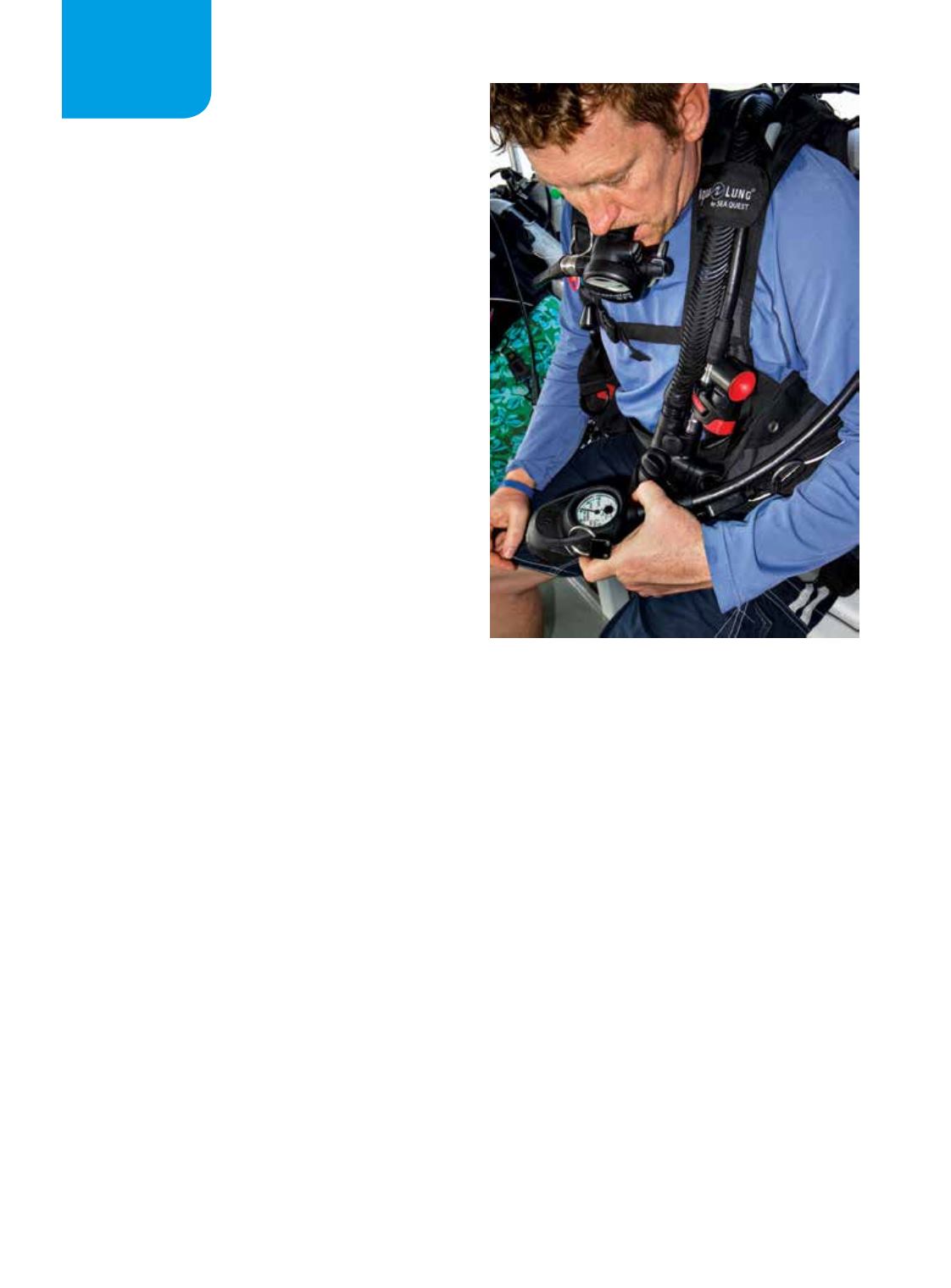

T
he sun was out, and the visibility
down at 30 feet was excellent. It was
nearly time to ascend, so my buddy
tapped her watch and then gave me
the “OK” signal; I happily signaled
back. This down time was just what I
had needed after a busy week at work.
Then, just when everything was going perfectly, I
heard some bubbling. I removed my second stage from
my mouth and held it with the mouthpiece facing
downward. To my dismay, I saw bubbles coming out
— my regulator was leaking. We were almost at our
safety stop, so I put the regulator back in my mouth
and double-checked that my buddy was within reach in
case something unexpected happened. Thinking about
it, I realized I hadn’t had my regulator serviced since
last summer, so I resolved to drop it off at the dive
shop later in the week. Better safe than sorry when it
comes to having gas to breathe.
When I got back to work at DAN®, my first task
for the week was to look at the latest diving incident
reports, which are submitted by divers who have had
or have witnessed a near-miss. These are unexpected
events that could have resulted in an injury. Curious,
I counted how many of the incidents were the result
of equipment malfunctions. Of the first 92 reports I
reviewed, 16 incidents (17 percent) involved equipment
issues. Based on other data, we know this number likely
overrepresents the incidence of equipment problems,
but this overrepresentation stands to reason because
equipment failure is a matter of concern to many divers. I
found it interesting that 13 of the 16 equipment problems
reported (81 percent) related to air supply, and the other
three reports (19 percent) related to buoyancy control.
While studying the air-supply problems, I soon
identified a common error: failure to watch the
submersible pressure gauge (SPG) while test-breathing
the regulator. Here is an excerpt from one of the
incident reports:
The group went out with four divers and two
guides. The drop-in was a back roll, and I dropped
in first. Prior to entry I checked all my gear and
tested my regulator and inflator. I then dumped
the air from my BCD [buoyancy control device]
and moved into position. The deckhand checked
all my equipment and made sure my tank valve
was opened. I rolled in and dropped down 6-10
feet and took my first breath: nothing. Now I was
underwater, slightly negatively buoyant, with no air
for breathing or inflation. I kicked for all I had and
was able to reach the boat and grab ahold of the
swim deck. The deckhand was then able to reach
over and turn my air back on
.
Another incident report highlights a common error
that’s reported to DAN every year: turning the valve
the wrong way.
While diving in Florida, I noticed that upon each
inhalation the needle of my SPG fluctuated. It dipped
down with each breath before returning to the correct
pressure reading for my tank. I continued diving while
keeping a close eye on the gauge, and upon reaching
a depth of approximately 55 feet it suddenly became
very difficult for me to breathe. I looked at my SPG
mid-breath and saw the needle drop to 0 psi, and it
did not readily move back up. I felt like there was no
more air available to me even though I knew there
108
|
SPRING 2016
GEAR
GEAR-RELATED
INCIDENTS
By Peter Buzzacott, MPH, Ph.D.
STEPHEN FRINK


















